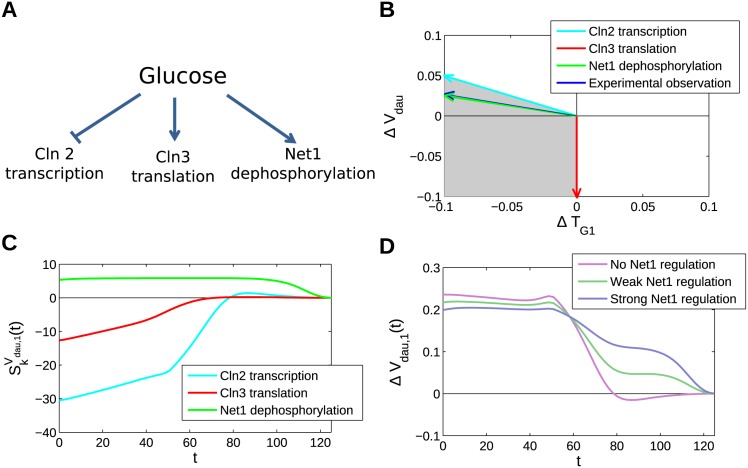Fig 6. Glucose signalling case study.
(A) A schematic of glucose regulation. Glucose is known to act on the cell cycle and many other processes through a diverse range of signalling pathways. We evaluate glucose modulation of the Barik model through regulation of Cln2 transcription (k s,mbS), Cln3 translation (k s,n3), and Net1 dephosphorylation (k d,t1, k d,nt). (B) The changes in behaviour mediated by increasing glucose levels are represented as vectors in the (ΔT G1, ΔV dau) space. The attainable range of behaviours is represented by the shaded region. This is consistent with experimental observations (dark blue line; see text for details). (C) The dynamic sensitivities of V dau to the three coregulating pathways are shown. Note that the Net1 pathway is the only one that is capable of changing daughter cell size when parameters are changed late in the cell cycle (after ∼80 mins) (D) The change in daughter cell size in the first generation following an increase in glucose levels, as a function of the time of perturbation. The consequences of different balances of these three parameter perturbations are shown, all of which have the same eventual change in behaviour. The inclusion of strong regulation in mitosis (through Net1) allows dynamic response to changes in glucose levels late in the cell cycle.

